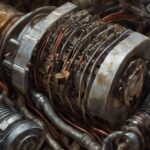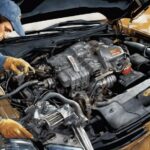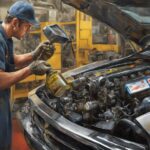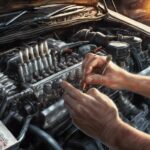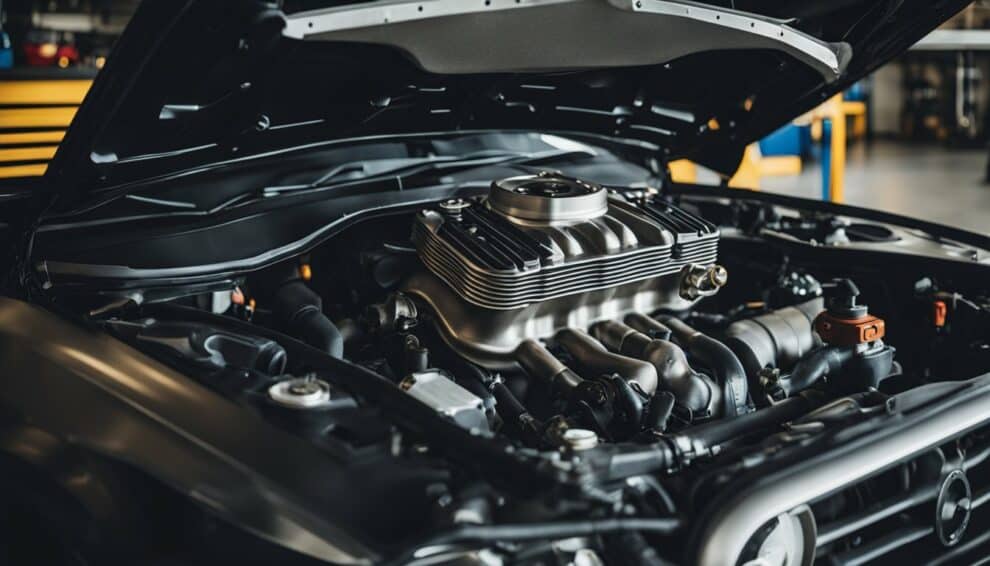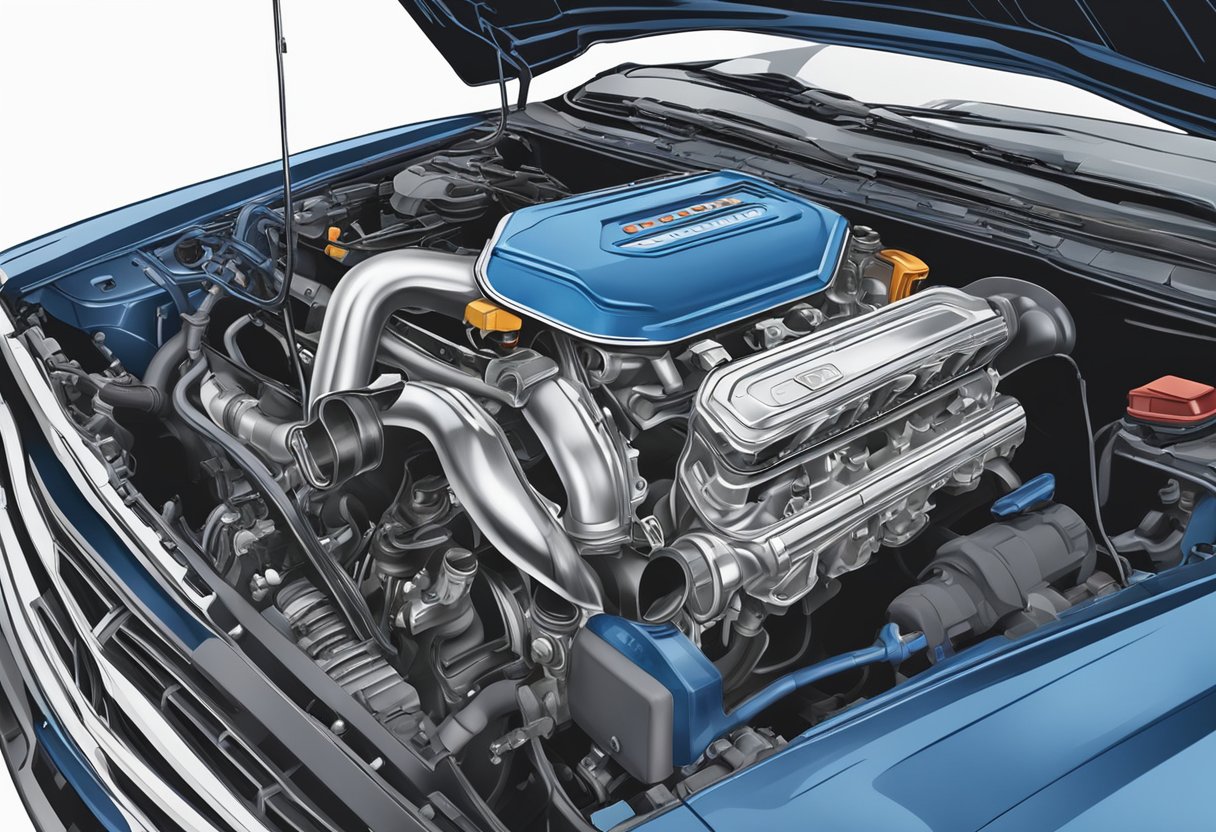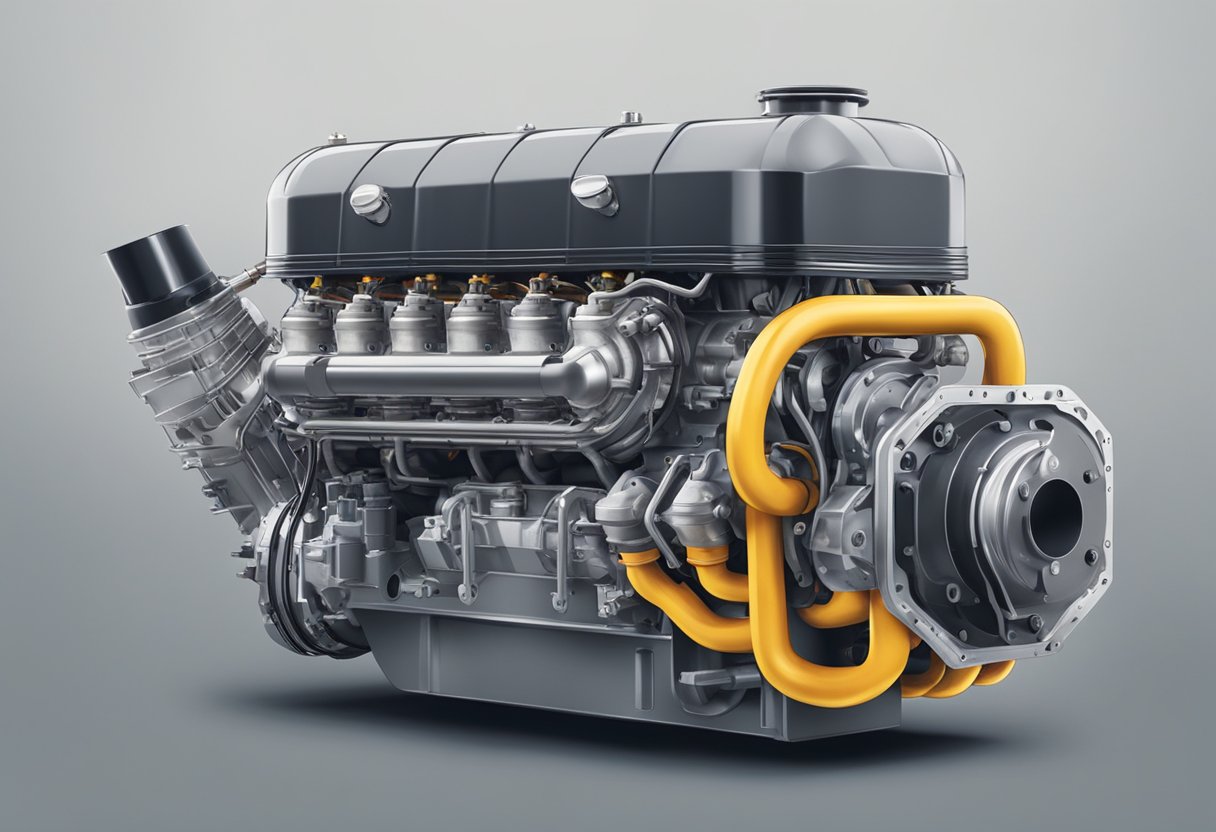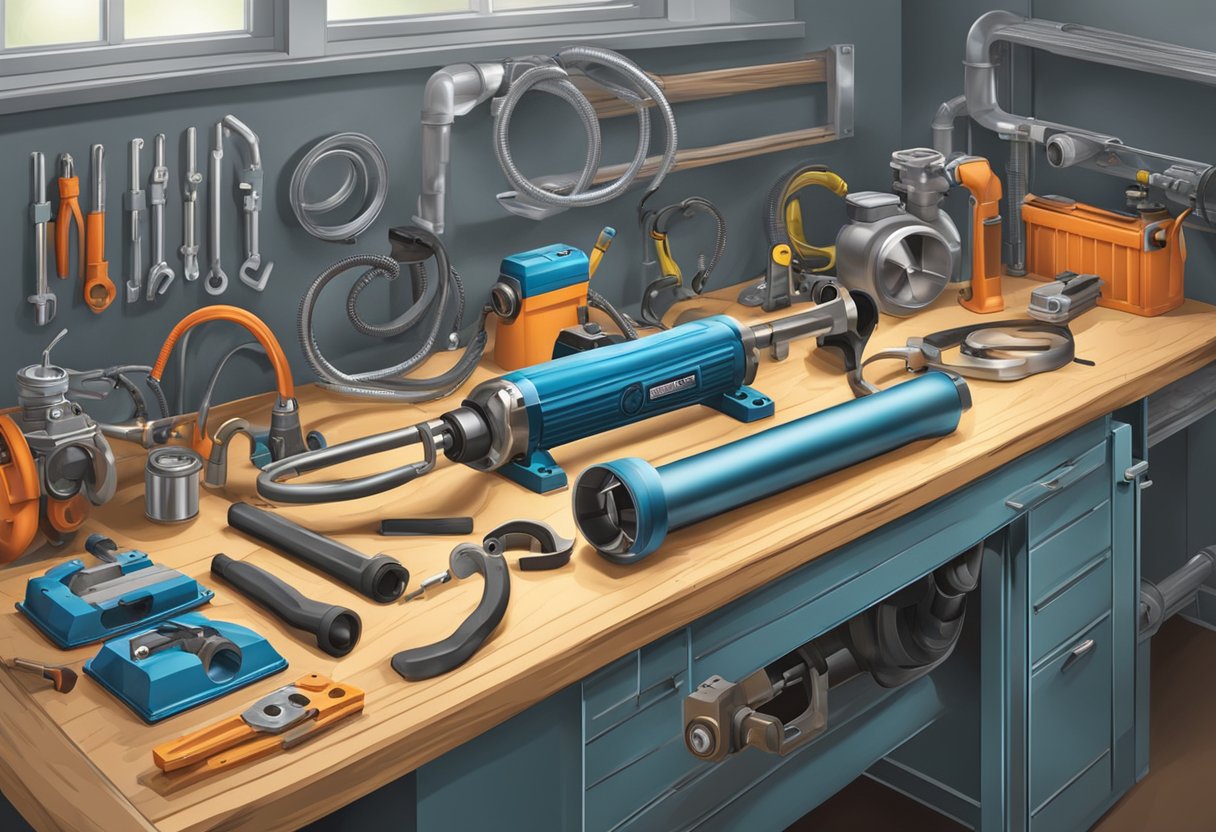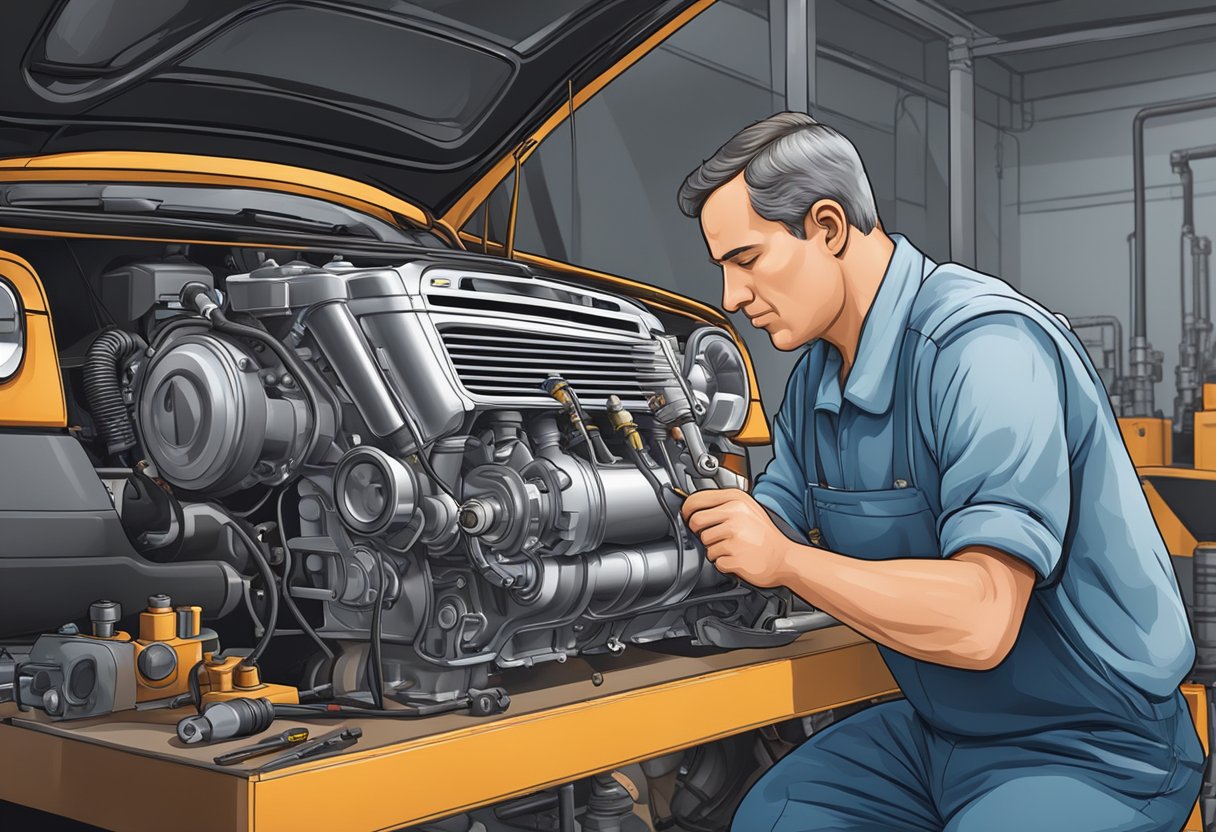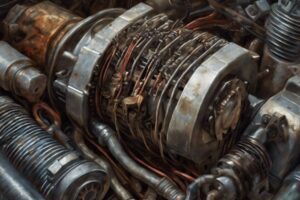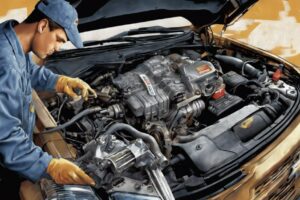Detecting and repairing exhaust manifold leaks can be a challenging task. An exhaust manifold leak can cause a variety of problems, including decreased engine performance, increased fuel consumption, and even engine damage. If you suspect that your vehicle has an exhaust manifold leak, it’s important to take action as soon as possible to prevent further damage.
One way to detect an exhaust manifold leak is to listen for a ticking sound coming from the engine. This ticking sound is often caused by exhaust gases leaking out of the manifold and can be a sign of a serious problem. Another way to detect an exhaust manifold leak is to look for black soot around the manifold or to feel for hot spots on the manifold itself. These signs can indicate that exhaust gases are leaking out of the manifold and need to be repaired.
Repairing an exhaust manifold leak can be a complex process that requires specialized knowledge and tools. It’s important to address the problem as soon as possible to prevent further damage to your engine and to ensure that your vehicle is running at peak performance. In this complete guide, we will walk you through the process of detecting and repairing exhaust manifold leaks, giving you the knowledge and confidence you need to get your vehicle back on the road.
Understanding Exhaust Manifold Leaks
If you notice a strange hissing or ticking sound coming from your engine, or if you smell exhaust fumes in the cabin of your vehicle, you may have an exhaust manifold leak. The exhaust manifold is an important component of your vehicle’s exhaust system that collects the exhaust gases from the engine and directs them through the exhaust pipes and out of the vehicle. When the manifold develops a leak, it can cause a variety of problems that can affect the performance and safety of your vehicle.
Signs of an Exhaust Manifold Leak
There are several signs that can indicate an exhaust manifold leak. If you notice any of the following symptoms, you should have your vehicle inspected by a qualified mechanic:
- Hissing or ticking sound coming from the engine
- Smell of exhaust fumes in the cabin
- Decreased fuel efficiency
- Loss of engine power
- Check Engine Light (CEL) illuminated on the dashboard
Potential Causes of Leaks
Exhaust manifold leaks can be caused by a variety of factors, including:
- Corrosion or rust caused by exposure to moisture and road salt
- Overheating of the engine
- Loose or damaged manifold bolts
- Cracks or holes in the manifold caused by wear and tear
Consequences of Ignoring a Leak
Ignoring an exhaust manifold leak can lead to serious problems, including:
- Reduced fuel efficiency and engine power
- Damage to other components of the exhaust system
- Increased emissions that can harm the environment
- Carbon monoxide poisoning if exhaust fumes enter the cabin of the vehicle
It is important to have any suspected exhaust manifold leaks inspected and repaired as soon as possible to avoid these potential consequences.
Diagnosing Exhaust Manifold Leaks
If you suspect an exhaust manifold leak, it’s essential to diagnose the problem as soon as possible. The longer you wait, the more damage it can cause to your engine and the more expensive the repair will be. Here are some diagnostic techniques to help you identify if you have an exhaust manifold leak.
Visual Inspection
The first step in diagnosing an exhaust manifold leak is to perform a visual inspection. Look under the hood of your vehicle and check the exhaust manifold for any signs of damage or corrosion. If you notice any cracks or holes, this is a clear indication that you have a leak.
Pressure Testing
Another way to diagnose an exhaust manifold leak is to perform a pressure test. This involves using a pressure gauge to check the pressure in the exhaust system. If the pressure is lower than it should be, this could be a sign of a leak.
Auditory Diagnosis Techniques
You can also use auditory diagnosis techniques to identify an exhaust manifold leak. One way to do this is to listen for any unusual noises coming from your engine. If you hear a hissing or popping sound, this could be a sign of a leak. You can also use a stethoscope to listen for any leaks in the exhaust system.
By using these diagnostic techniques, you can identify if you have an exhaust manifold leak and take the necessary steps to repair it. Remember, it’s essential to address the problem as soon as possible to prevent further damage to your engine.
Tools and Materials for Repair
Essential Tools
To repair an exhaust manifold leak, you will need a few essential tools. These include a socket wrench set, a torque wrench, a breaker bar, a pry bar, pliers, a screwdriver set, and a wire brush. You may also need an angle grinder or a hacksaw to remove any rusted or corroded bolts.
Sealants and Gaskets
In addition to tools, you will need sealants and gaskets to repair an exhaust manifold leak. The most common sealant used is high-temperature silicone sealant, which can withstand the high temperatures generated by the engine. You will also need gaskets, which are typically made of metal or graphite. It is important to use the correct gasket for your specific make and model of vehicle.
Safety Equipment
Repairing an exhaust manifold leak can be a hazardous task, so it is important to wear the appropriate safety equipment. This includes safety glasses, gloves, and a respirator mask to protect against harmful fumes. It is also recommended to work in a well-ventilated area to avoid inhaling exhaust fumes.
Overall, having the right tools and materials is crucial to successfully repairing an exhaust manifold leak. By following proper safety procedures and using the correct sealants and gaskets, you can ensure a long-lasting repair.
Step-by-Step Repair Process
If you have determined that your exhaust manifold is leaking, it’s important to repair it as soon as possible to prevent further damage to your engine. Here is a step-by-step guide to help you repair your exhaust manifold:
Removing the Manifold
First, you need to remove the exhaust manifold from your engine. Start by disconnecting the negative battery cable to prevent any electrical accidents. Then, remove any components that are in the way of the manifold, such as the heat shield or oxygen sensors. Finally, use a wrench or socket set to remove the bolts that hold the manifold in place.
Preparing the Surface
Once you have removed the manifold, you need to prepare the surface for the new gasket. Use a scraper or wire brush to remove any old gasket material or debris from the manifold and the engine block. Then, use a solvent or brake cleaner to clean the surface thoroughly. Make sure the surface is completely dry before moving on to the next step.
Installing the New Gasket
Now it’s time to install the new gasket. Make sure the gasket is the correct size and shape for your manifold and engine block. Place the gasket on the engine block, aligning the bolt holes with the holes in the block. Then, carefully place the manifold on top of the gasket, aligning the bolt holes once again.
Reattaching the Manifold
Finally, you need to reattach the manifold to the engine block. Start by threading the bolts into the holes by hand to avoid cross-threading. Then, use a torque wrench to tighten the bolts to the manufacturer’s specifications. Reinstall any components that were removed earlier, and reconnect the negative battery cable.
By following these steps, you can repair your exhaust manifold and prevent further damage to your engine. Remember to take your time and be careful to avoid any mistakes.
Preventive Measures and Maintenance
To avoid exhaust manifold leaks, it is important to take preventive measures and perform regular maintenance. By doing so, you can extend the life of your exhaust manifold and avoid costly repairs. Here are some important preventive measures and maintenance tips to keep in mind:
Regular Inspection Schedules
Regular inspections are crucial to detecting any potential leaks early on. You should inspect your exhaust manifold at least once a year or more frequently if you drive in harsh conditions. During the inspection, check for any signs of cracks, rust, or corrosion. Also, make sure that all bolts and gaskets are tight and secure.
Immediate Attention to Symptoms
If you notice any symptoms of an exhaust manifold leak, such as a loud hissing noise or a strong smell of exhaust fumes, it is important to take immediate action. Ignoring these symptoms can lead to further damage to your vehicle and even pose a safety risk. Take your vehicle to a professional mechanic as soon as possible to diagnose and repair the issue.
Quality Replacement Parts
When it comes to replacing parts of your exhaust manifold, it is important to use high-quality replacement parts. Cheap or low-quality parts can lead to further damage and may not last as long as higher-quality parts. Make sure to purchase replacement parts from a reputable supplier and follow the manufacturer’s recommendations for installation.
By following these preventive measures and maintenance tips, you can ensure that your exhaust manifold remains in good condition and avoid costly repairs in the future.
As an Amazon Associate we earn from qualifying purchases.


